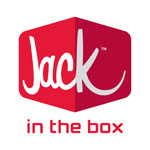Title Page
-
Conducted on
-
Prepared by
-
Location
Food Safety Audit
Cross Contamination
-
1) No bare or gloved hands are used to touch raw hamburger (Meat tongs only).
-
- Raw hamburger can contaminate hands and gloves with bacteria. Gloved or bare hands can cross- contaminate other surfaces and food they touch, creating a food safety hazard.
- When a Food Safety standard fails, the restaurant employee or Person in Charge of the restaurant is required to take appropriate action to address the failed standard.
- The Auditor observes and documents whether or not the employee or Person in Charge took appropriate action to address the failed standard.
- The Auditor will be responsible for ensuring that appropriate action to address the failed Food Safety standard is taken.
i. Discard affected product. Do not serve
ii. Wash and sanitize hands
iii. Clean and sanitize tools, counters, and equipment
iv. The employee is removed from workstation for re-training and replaced with a certified grill operator
- Notes: Do not assess back of house prep or inventory counting functions -
2) Employee does not use meat tongs (hamburger tongs) to handle cooked ready-to-eat (RTE) product.
-
- Tongs used to handle raw meat may carry dangerous bacteria on their surface. If these tongs come into contact with RTE food, bacteria from the tongs can contaminate RTE food, which will receive no further cooking. This can pose a serious food safety hazard.
-
3) No bare or gloved hands are used to touch raw fish.
-
- Raw fish can contaminate hands with bacteria. Hands can easily cross-contaminate other surfaces and food they touch, creating a food safety hazard.
- If gloved hands are used to touch raw fish followed by correct and proper glove change and hand wash, do not assess. If no glove change, no hand wash, or an actual cross contamination event occurs, assess. -
4) Raw food does not cross-contaminate RTE food or packaging.
-
- Raw food in contact with RTE food or packaging can create a microbiological cross-contamination of the RTE food or packaging. This is a food safety hazard.
-
5) Chemicals do not cross-contaminate food, packaging, or tray liners.
-
- Chemicals that come in contact with food or packaging can create a chemical contamination.
-
6) Meat tongs and sear tools are stored correctly and in separate pans. Tools are changed every four (4) hours at minimum as required by the Food Code.
-
- Meat tongs and sear tools come into direct contact with raw hamburger patties. If they contact other surfaces such as other tools, counter tops, tool handles, they create a hazardous microbiological cross-contamination situation.
- Note: Meat tongs and sear tools are not stored correctly and/or in separate pans.
- Tools are not changed out or washed within 15 minutes after the tool timer alarm. (identify which tools were not rotated).
- Identify and confirm the method of timing used in the restaurant. Do not assess the type of timer.
- Policy: : Define tools as tongs, sear tools, tong and sear tool pan, rice scoop and pan, knives and cutting boards, mix-in machine spindle, protein holding drawers. -
7) Where allowed, the JIB raw egg handling procedure is correctly followed after cracking raw shell eggs.
-
- Fingers that are not vigorously rubbed with a dedicated sanitizer towel after touching raw eggs can result in hands that are contaminated, and can easily cross-contaminate other surfaces and foods they touch, creating a food safety hazard.
-
8) No raw food is stored above or behind RTE food or packaging.
-
- Raw food stored above RTE food can fall into the RTE food or packaging, creating a risk of microbiological cross contamination.
-
9) No chemicals are stored above any food or packaging.
-
- Chemicals stored above any food or packaging can fall or spill into food or packaging, creating a risk of chemical cross-contamination.
- Do not assess food grade petro gel and grill release. -
10) Rings with stones, artificial fingernails, nails with nail polish or jewelry are covered by gloves. If any of these items are worn by management and/or Guest Service employees, they must be covered by gloves when handling food.
-
- Stones in rings (diamonds, gems, glass, dangling attachments on any item that has the potential to fall into food), artificial fingernails, fingernail polish and fingernail jewelry are potential physical contaminants of food. Hands must be covered by gloves when these are worn. Jewelry other than on hands is covered by the Jack in the Box uniform and appearance policies.
-
11) Spatulas, cutting boards, and knives are used and stored properly as defined in the IPP Manual and in FSC Instruction #23. Tools are washed, rinsed, and sanitized. Sanitizer concentration in the dish washing sink or dish washer meets manufacturer’s recommendation.
-
- Note: Spatulas, cutting boards and knives that are not used appropriately and as intended in the IPP manual. Tools should be cleaned and sanitized as instructions require, to prevent cross-contamination. The appropriate sanitizer test kit must be available.
- Policy: Define tools as tongs, spatulas, sear tools, tong and sear tool pan, rice scoop and pan, knives and cutting boards, mix-in machine spindle, protein holding drawers.
- Do not assess wet nesting.
- If meat comes off grill with an egg, the yellow spatula is used. If meat comes off grill alone, the white spatula is used. Do not assess if white spatula touches egg during placement. -
12) Iced tea liner at the self-serve station secured with a zip tie and the white tube is trimmed.
-
- Securing the iced tea liner prevents intentional and unintentional cross-contamination.
- Policy: Securing the liner with a knot is an acceptable alternative
Temperature Control and FSC Knowledge
-
14) Auditor performs a Food Safety Checklist review.
-
- Policy: Spaces that could be left blank but have a line through them are acceptable. Restaurants without a dishwasher or cold condiment rail may leave those sections blank.
- Do not assess minor administrative errors. NIU's may be X'd instead of circled; lines may appear where there should be blanks, etc. Documents that are not done, contain entire sections void of information, or are consistently void of specific information across multiple days are assessed. NIU's do not require further documentation. Items for resolution / follow up is a point of communication. Strict Corrective Action formatting is not assessed.
- Review 5 days previous to today's FSC document. Items marked NIU do not require further documentation. Writing NIU or Not in Use is an acceptable designation if no NIU is on the form. -
15) Employee can independently and without coaching demonstrate the correct procedure to take temperature of food and equipment.
-
- An employee responsible for evaluating food and equipment temperature will be evaluated as to their independent ability to correctly take temperatures and verify correct temperature control and management.
- Policy: Employee may, without penalty, repeat the effort in an attempt to determine an accurate result.
- If a dial thermometer is used to take the temperature of refrigerators or freezers, food temperature is not necessary. -
16) Flat Grill: ≥ 325°F or Taylor Clamshell Grill: ≥ 285°F (surface) AND ≥ 410°F (top platen Teflon)
-
- Policy: The Auditor will ask the person(s) managing the FSC in the restaurant on the day of the audit to collect and record the above equipment temperatures as they normally would. The Auditor will not interfere in any way, but merely observe. Maintaining the correct equipment or product temperatures is necessary to maintain the safety of our food products.
- Employee will take and record the temperatures of these items for this question, using the restaurant's thermometer (Surface probe or Infrared)
- Employee may, without penalty, repeat the effort in an attempt to determine an accurate result. -
17) Storage Refrigerator ≤ 41°F
-
- Policy: The Auditor will ask the person(s) managing the FSC in the restaurant on the day of the audit to collect and record the above equipment temperatures as they normally would. The Auditor will not interfere in any way, but merely observe. Maintaining the correct equipment or product temperatures is necessary to maintain the safety of our food products.
- The employee will take and record the temperatures of these items in question, using the restaurant's thermometer (Dial, immersion probe, meat probe, or Infrared). Employee may, without penalty, repeat the effort in an attempt to determine an accurate result. -
18) POU Grill Refrigerator ≤ 41°F
-
- Policy: The Auditor will ask the person(s) managing the FSC in the restaurant on the day of the audit to collect and record the above equipment temperatures as they normally would. The Auditor will not interfere in any way, but merely observe. Maintaining the correct equipment or product temperatures is necessary to maintain the safety of our food products.
- The employee will take and record the temperatures of these items in question, using the restaurant's thermometer (Dial, immersion probe, meat probe, or Infrared). Employee may, without penalty, repeat the effort in an attempt to determine an accurate result. -
19) Guest Services Refrigerator ≤ 41°F
-
- Policy: The Auditor will ask the person(s) managing the FSC in the restaurant on the day of the audit to collect and record the above equipment temperatures as they normally would. The Auditor will not interfere in any way, but merely observe. Maintaining the correct equipment or product temperatures is necessary to maintain the safety of our food products.
- The employee will take and record the temperatures of these items in question, using the restaurant's thermometer (Dial, immersion probe, meat probe, or Infrared). Employee may, without penalty, repeat the effort in an attempt to determine an accurate result. -
20) POU Fryer Refrigerator ≤ 41°F
-
- Policy: The Auditor will ask the person(s) managing the FSC in the restaurant on the day of the audit to collect and record the above equipment temperatures as they normally would. The Auditor will not interfere in any way, but merely observe. Maintaining the correct equipment or product temperatures is necessary to maintain the safety of our food products.
- The employee will take and record the temperatures of these items in question, using the restaurant's thermometer (Dial, immersion probe, meat probe, or Infrared). Employee may, without penalty, repeat the effort in an attempt to determine an accurate result. -
22) Regular Patty ≥ 155°F
-
- Policy: The Auditor will ask the person(s) managing the FSC in the restaurant on the day of the audit to collect and record the above product temperatures as they normally would. The Auditor will not interfere in any way, but merely observe. Maintaining the correct equipment or product temperatures is necessary to maintain the safety of our food products.
- The employee will take and record the temperatures of these items for this question, using the restaurant's thermometer (Meat Probe)
- Employee must take five temperatures from each patty, and all must be 155°F or above. Harmful bacteria are killed at this temperature.* If a critical temperature is not met, examples of corrective action may include discarding product, correcting temperature of equipment, calling for equipment maintenance, taking product temperatures within the refrigerator if the refrigerator temperature is too hot, or checking the calibration of the thermometer.
- Do not assess technique under this standard (i.e. Final Flip / Visual Check). If technique is incorrect or failed, assess under #15. -
23) Jumbo Patty ≥ 155°F
-
- Policy: The Auditor will ask the person(s) managing the FSC in the restaurant on the day of the audit to collect and record the above product temperatures as they normally would. The Auditor will not interfere in any way, but merely observe. Maintaining the correct equipment or product temperatures is necessary to maintain the safety of our food products.
- The employee will take and record the temperatures of these items for this question, using the restaurant's thermometer (Meat Probe)
- Employee must take five temperatures from each patty, and all must be 155°F or above. Harmful bacteria are killed at this temperature.* If a critical temperature is not met, examples of corrective action may include discarding product, correcting temperature of equipment, calling for equipment maintenance, taking product temperatures within the refrigerator if the refrigerator temperature is too hot, or checking the calibration of the thermometer.
- Do not assess technique under this standard (i.e. Final Flip / Visual Check). If technique is incorrect or failed, assess under #15. -
25) Shake Mix ≤ 41°F
-
- Policy: The Auditor will ask the person(s) managing the FSC in the restaurant on the day of the audit to collect and record the above product temperatures as they normally would. The Auditor will not interfere in any way, but merely observe. Maintaining the correct equipment or product temperatures is necessary to maintain the safety of our food products.
- The employee will take and record the temperatures of these items for this question, using the restaurant's thermometer (Meat Probe, Immersion Probe) in the front, middle, and back of the hopper.
- Employee may, without penalty, repeat the effort in an attempt to determine an accurate result. -
26) Natural Cheese on Condiment Rail ≤ 41°F
-
- Policy: The Auditor will ask the person(s) managing the FSC in the restaurant on the day of the audit to collect and record the above product temperatures as they normally would. The Auditor will not interfere in any way, but merely observe. Maintaining the correct equipment or product temperatures is necessary to maintain the safety of our food products.
- The employee will take and record the temperatures of these items for this question, using the restaurant's thermometer (Meat Probe) -
27) Rice ≥ 135°F (Rice Cooker), Rice packet ≥165°F (Microwave)
-
- Policy: The Auditor will ask the person(s) managing the FSC in the restaurant on the day of the audit to collect and record the above product temperatures as they normally would. The Auditor will not interfere in any way, but merely observe. Maintaining the correct equipment or product temperatures is necessary to maintain the safety of our food products.
- FOR MICROWAVE ONLY - If the restaurant is using Microwavable Rice, the auditor will ask the PIC to cook a portion of rice in the microwave and verify the temperature using the Meat Probe or Immersion Probe thermometer. This standard is failed if any rice does not meet temp. If temperature taking technique is incorrect or failed, assess under Standard #11.
- The employee will take and record the temperatures of these items for this question, using the restaurant's thermometer (Meat or Immersion Probe).
Final Flip and Visual Check
-
28) Final flip and visual check on all raw hamburger patties are performed correctly and consistently (no pink or red meat); juices must be clear before patty is removed from the grill.
-
- Final flip serves to remove any red juices from the patty surface, and visual check confirms that the center of patty is not pink or red, to show the patty is cooked properly.
- Policy: When a Food Safety standard fails, the restaurant employee or Person in Charge of the restaurant is required to take appropriate action to address the failed standard.
- The Auditor observes and documents whether or not the employee or Person in Charge took appropriate action to address the failed standard.
- The Auditor will be responsible for ensuring that appropriate action to address the failed Food Safety standard is taken.
- Discard hamburger patty or assembled product that was not visually checked
- The employee is removed from workstation for re-training and replaced with a certified grill operator
- Clean and sanitize tools, counters, and equipment
- Wash and sanitize hands -
29) Raw eggs are cooked thoroughly and visually checked (yolks are solid, not runny).
-
- Raw eggs may contain harmful bacteria. The visual check confirms that the center of the egg is cooked properly.
- Policy: Do not assess if restaurant is using pasteurized eggs.
Employee Health and Hygiene
-
31) No employees are ill (nauseous, vomiting, diarrhea or jaundice).
-
- Ill employees may contaminate food and pass their infection on to other employees or guests.
- Policy: When a Food Safety standard fails, the restaurant employee or Person in Charge of the restaurant is required to take appropriate action to address the failed standard.
- The Auditor observes and documents whether or not the employee or Person in Charge took appropriate action to address the failed standard.
- The Auditor will be responsible for ensuring that appropriate action to address the failed Food Safety standard is taken.
- Ill employees are not allowed to work
- Destroy affected ingredients or food contacted by ill employee
- Wash, rinse, sanitize (or replace) tools used by ill employee
- Contact the Quality Hotline for further instruction -
32) Wounds are bandaged with a blue bandage, and covered with a food handler glove.
-
- Bandages and gloves create a physical barrier between the wound and food or food contact surfaces. A blue bandage is easily seen so it will not become a physical contaminant of food.
Quality of Hand Washing
-
33) Hands must be washed only at the hand wash sink(s) using soap.
-
- Proper, frequent hand washing is one of the most important things you can do to prevent cross-contamination and protect your guests, your fellow employees, and yourself from bacteria that can cause illness. Hand washing with soap is required by the food code.
- Note:
- Hand washing was not performed at a designated hand wash sink.
- Soap was not applied during the hand washing process
- Policy:
- When a Food Safety standard fails, the restaurant employee or Person in Charge of the restaurant is required to take appropriate action to address the failed standard.
- The Auditor observes and documents whether or not the employee or Person in Charge took appropriate action to address the failed standard.
- The Auditor will be responsible for ensuring that appropriate action to address the failed Food Safety standard is taken.
- Destroy any food in the sink
- Wash, rinse, sanitize, and air dry any tools in the sink
- Re-direct employee(s) to appropriate hand wash sink
- Instruct employee(s) to wash hands in appropriate hand wash sink -
34) Hands are washed in running hot water. Hot water is available within 30 seconds.
-
- Hot water is needed to kill germs and bacteria.
- Note: Hot water was not available within 30 seconds (verified by Team Lead). Hands were washed using only cold water.
When to Wash Hands
-
36) After using the restroom, wash hands twice (in the restroom, and again upon entering the kitchen).
-
- Hands are washed in the restroom to minimize the spread of bacteria. They must be washed again in the kitchen to remove any bacteria that may have been on any door handles or other surfaces that the employee may have touched.
- Policy: When a Food Safety standard fails, the restaurant employee or Person in Charge of the restaurant is required to take appropriate action to address the failed standard.
- The Auditor observes and documents whether or not the employee or Person in Charge took appropriate action to address the failed standard.
- The Auditor will be responsible for ensuring that appropriate action to address the failed Food Safety standard is taken.
- If a cross contamination occurs due to incorrect or missed hand washing, discard affected product.
- Clean and sanitize contaminated counters, utensils, equipment, and hands
- Coach and on proper hand washing procedures
- Observe correct behavior -
37) At the beginning of their shift and after returning from their break.
-
- Hands must be washed prior to beginning work to remove dirt, debris, as well as germs.
- Policy: When a Food Safety standard fails, the restaurant employee or Person in Charge of the restaurant is required to take appropriate action to address the failed standard.
- The Auditor observes and documents whether or not the employee or Person in Charge took appropriate action to address the failed standard.
- The Auditor will be responsible for ensuring that appropriate action to address the failed Food Safety standard is taken.
- If a cross contamination occurs due to incorrect or missed hand washing, discard affected product.
- Clean and sanitize contaminated counters, utensils, equipment, and hands
- Coach and on proper hand washing procedures
- Observe correct behavior -
38) After touching human body parts, i.e., face, head or hair.
-
- Hands that touch any surface or body part may become contaminated. Hands can easily contaminate other food or surfaces that they touch.
- Policy: Look beyond incidental contact before assessing. Assess grasping or repeated behaviors which result in hand contact. -
39) After coughing, sneezing on hands, using a handkerchief or disposable tissue, or after using tobacco, eating, or drinking.
-
- Hands that have come in contact with the mouth or nose are contaminated, and must be washed to prevent cross-contamination.
- Note:
- Observed Food handling employee not wash hands after using tobacco, eating or drinking.
- Observed Food handling employee not wash hands after coughing, sneezing on hands, using a handkerchief or disposable tissue. -
40) After conducting a cleaning activity, handling dirty equipment, utensil or surface, touching a trash can or picking up ANY dropped food or garbage from the floor.
-
Handling dirty equipment or engaging in other cleaning activities can contaminate hands that can result in cross-contamination when food and food contact surfaces are touched.
- Note: Assess if picking up dropped food or garbage from the floor. Assess if hand contacts the floor
- Policy: Do not assess if hand wash opportunity is not made present by the contact. Do not assess handling of a ladder if no food or food contact surface it touched. -
41) Before handling food and during food preparation as often as necessary to remove soil, and to prevent cross-contamination.
-
Raw foods can contaminate hands with bacteria. Hands can easily contaminate other surfaces that they touch.
-
42) Before putting on or changing FOOD HANDLER gloves.
-
Washing hands before putting on food handler gloves is required in the Food Code.
Hourly Handwash Management
-
44) All employees including management inside the restaurant involved in food handling or preparation, ingredient prep, guest service and dishwashing wash their hands within 15 minutes of the timer going off.
-
- Hourly hand washing is essential to minimizing cross contamination. It is a minimum standard and does not replace any other time hand washing should occur.
- Note: Team member(s) observed not washing their hands within 15 minutes of the timer going off.
- Policy: When a Food Safety standard fails, the restaurant employee or Person in Charge of the restaurant is required to take appropriate corrective to address the failed standard.
- The Auditor observes and documents whether or not the employee or Person in Charge took appropriate action to address the failed standard.
- The Auditor will be responsible for ensuring that appropriate action to address the failed Food Safety standard is taken.
i. If hourly hand wash is missed, immediately have all employees wash and sanitize hands
ii. Verify hand wash timer is correctly set and running
iii. If cross contamination occurs due to missed hand washing, discard affected product.
iv. Clean and sanitize any contaminated counters, utensils, equipment, and hands Explain what employee did not wash hands (name or position).
- Do not assess if employee is washing hands or is in line to wash hands when time expires. -
45) The timer is always running and reset when it goes off.
-
- The hand wash timer needs to be running to ensure that the hourly hand wash occurs. Resetting the timer immediately when it sounds ensures that the next hour's cycle begins right away.
- Policy: Hand wash timer was not running at time of audit. Hand wash timer was not reset immediately after it sounds.
General Risk Assessment
-
46) The restaurant is free of any imminent health hazard while operating.
-
An imminent health hazard is something that has the potential to cause a significant threat or danger to employees and to the public. These food safety risks require closure of the restaurant. Sewage and waste water are contaminated with bacteria, viruses and parasites. When they come into contact with food, equipment, food contact surfaces, hands, and the bottom of employees' shoes, they have the potential to cause serious illness. Pests such as cockroaches and rodents can spread disease, and damage food and supplies. Unsanitary conditions are those that might be contaminated with dirt or filth, or lead to injury, spread of disease, or provide harbor (shelter) for pests.
Note:
- Unsanitary conditions present
- Sewage/standing water present on floors
- Active fire observed
- Water unavailable
- Power is off
- Rodent / Roach infestation is observed. Roach infestation is verified after initial sighting and intensified inspection. Two live roaches warrants intensified inspection.
- Mop sink that overflows due to drain / sewage back up and contaminates the floor is a contamination Policy: Question is non-compliant if any of the pre-defined notes are marked incorrect. -
47) The restaurant is free of any general health hazard while operating.
-
Standing water and lack of hot water present a real health hazard. Pests in the kitchen and food storage area can cause food contamination.
Note:
- No hot water
- Flies, ants, moths, crickets present on food or food contact surfaces. No more than two roaches identified after intensified inspection.
Policy: Question is non-compliant if any of the pre-defined notes are marked incorrect.
Miscellaneous
-
64) Quat Sanitizer in containers is at the correct strength (150-400ppm). Auditor will ask employee to check the sanitizer strength in each container including the shake sanitizer container(s) and where allowed, egg sanitizer using a test strip.
-
Policy: Check all sanitizer container in use. All containers must meet acceptable concentration levels.
-
101) There is one management employee assigned to the restaurant with a current/ valid Food Safety certification from an approved, licensed provider (Check on site certification).
-
Policy: Confirm the certified employee is on the staff of the restaurant being audited.
Knowledge
-
58) Restaurant is following and completing the Weekly Thermometer Calibration printed on the last page of the Food Safety Checklist book.
-
Policy:
- Recorded temperatures for equipment thermometers and IR thermometer should be within 5ºF of each other, and within appropriate temperature range, or corrective action noted.
- All refrigerators and freezers in the restaurant must have an equipment thermometer and calibration must be documented, or CA documented. -
65) Time as a Public Health Control (TPH) procedures are correctly followed for designated TPH foods.
-
Policy:
- Designated TPH Foods include: non-refrigerated shredded lettuce, iceberg lettuce leaves, sliced tomato, any non-refrigerated processed or natural cheeses at assembly and taco stations and (shell eggs held at room temperature in Guam, Hawaii, Idaho, Oregon, Washington only).
- Designated timers are set for all TPH foods, which can include labels, quality clocks, digital timers, etc. TPH foods are discarded when designated four-hour timer (2 hour for shell eggs for states listed above) expires. Timers are reset when TPH foods are removed from refrigeration.
Re-Audit / Follow-up Only Section
-
55) Is there a completed Corrective Action plan in the restaurant for any and all CRITICAL standards identified as non-compliant during previous Food Safety audit?
-
Policy:
- An effective action plan should be written and maintained in the store for each non-compliant CRITICAL standard. The action plan should clearly identify the standard for which it was created and include a description of planned remediation activities, list of persons responsible for implementing the plan and a completion date.
- When a Food Safety audit fails, a re-audit will be scheduled between 30-45 days from that date.
- Action Plans are required when audits FAIL due to CRITICAL standard(s).
- Action plans are required for each CRITICAL standard missed.
- Action Plans must be completed and available in the restaurant when required.
- Auditor will review previous audit prior to start of a re-audit to identify if it was a critical failure.
If it was a CRITICAL failure, auditor will identify what standard(s) should be documented in Action Plan. During the re-audit, the auditor will review and confirm each critical standard missed has an action plan in place. -
58) Have all CRITICAL standards identified as non-compliant in previous Food Safety audit report been resolved?
-
Policy:
- Restaurant personnel are responsible for taking actions to resolve any non-compliance. If any of the CRITICAL standards identified in the previous audit have not been corrected, (repeat item) the standard has not been met.
- If there were any CRITICAL standards identified in the previous audit that were not resolved please document the standards that were not resolved.
Scoring and Results
-
Jack in the Box NSF Food Safety Audit Scoring Standards
1 Critical = Fail
3 Majors = 1 Critical = Fail
6 Minors = 3 Majors = 1 Critical = Fail -
Final Score













